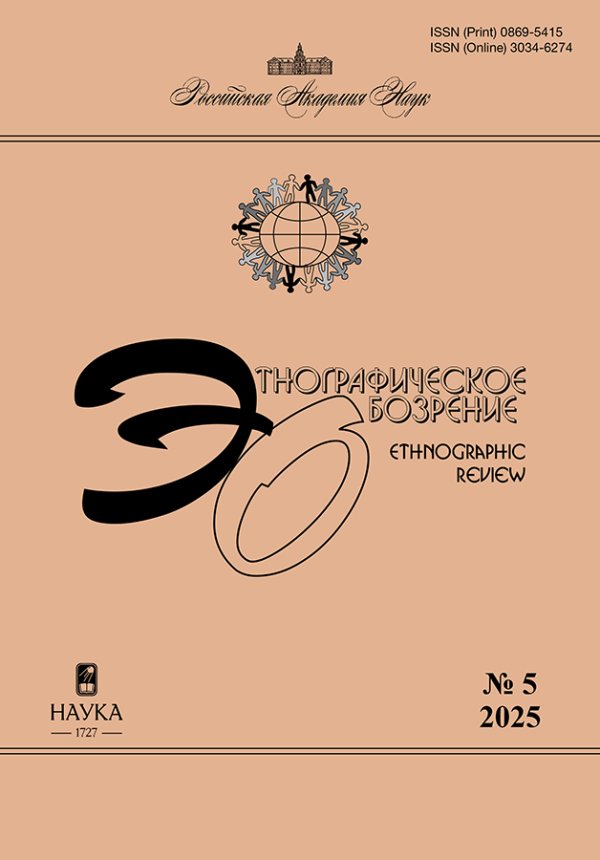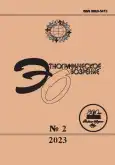It is “Blasphemy to touch this burial”: how archaeologists can hurt the feelings of believers and strengthen the ethnic-religious identity in the North Ossetia - Alania
- Authors: Shtyrkov S.A1
-
Affiliations:
- European University at St. Petersburg
- Issue: No 2 (2023)
- Pages: 93-110
- Section: Articles
- URL: https://journals.rcsi.science/0869-5415/article/view/144871
- DOI: https://doi.org/10.31857/S0869541523020057
- EDN: https://elibrary.ru/QUYLTU
- ID: 144871
Cite item
Full Text
Abstract
References
- Белецкий Д.В. Заметки о Нузальском храме // Историко-филологический архив. 2004. № 2. С. 22-57.
- Белецкий Д.В., Виноградов А.Ю. Нижний Архыз и Сенты - древнейшие храмы России. Проблемы христианского искусства Алании и Северо-западного Кавказа. М.: Индрик, 2011.
- Гольдштейн А.Ф. Средневековое зодчество Чечено-Ингушетии и Северной Осетии. М.: Наука, 1975.
- Джанайты С.Х. Три слезы Бога. Владикавказ: СОИГСИ им. В.И. Абаева, 2007.
- Кузнецов В.А. Реком, Нузал и Царaзонта. Владикавказ: Ир, 1990.
- Мужухоев М.Б. К вопросу об интерпретации некоторых культурных памятников Северной Осетии эпохи Средневековья // Вопросы историко-культурных связей на Северном Кавказе / Отв. ред. М.М. Блиев. Орджоникидзе: СОГУ им. К.Л. Хетагурова, 1985. С. 72-82.
- Панков И.А. Легенды об осквернении святынь как элемент структуры сакрального пространства мазара // Традиционная культура. 2020. Т. 21. № 2. С. 148-159. https://doi.org/10.26158/TK.2020.21.2.013
- Синанов Б.А. 1100-летие Крещения Алании в общественно-политическом и общественном дискурсе Северной Осетии // Kavkaz-Forum. 2022. № 11 (18). С. 108-128. https://doi.org/10.46698/VNC.2022.18.11.009
- Тменов В.Х. Древние верования осетин и ингушей и их отражение в памятниках материальной культуры // Вопросы историко-культурных связей на Северном Кавказе / Отв. ред. М.М. Блиев. Орджоникидзе: СОГУ им. К.Л. Хетагурова, 1985. С. 33-71.
- Шнирельман В.А. Ценность прошлого: этноцентристские исторические мифы, идентичность и этнополитика // Реальность этнических мифов / Отв. ред. М.Б. Олкотт, А. Малашенко. М.: Гендальф, 2000. С. 12-33.
- Alonso A.M. The Politics of Space, Time, and Substance: State Formation, Nationalism, and Ethnicity // Annual Review of Anthropology. 1994. No. 23. P. 379-405.
- Bhabha H.K. The Location of Culture. L.: Routledge, 1994.
- Brož L. Conversion to Religion? Negotiating Continuity and Discontinuity in Contemporary Altai // Conversion after Socialism: Disruptions, Modernisms and Technologies of Faith in the Former Soviet Union / Ed. M. Pelkmans. Oxford: Berghahn Books, 2009. P. 17-37.
- Brož L. Spirits, Genes and Walt Disney's Deer: Creativity in Identity and Archeology Disputes (Altai, Siberia) // The Archaeological Encounter: Anthropological Perspective / Eds. P. Fortis, I. Praet. St. Andrews: University of St. Andrews, 2011. P. 263-297.
- Davie G. Vicarious Religion: A Methodological Challenge // Everyday Religion: Observing Modern Religious Lives / Ed. N. Ammerman. N.Y.: Oxford University Press, 2007. P. 21-35.
- Day J. The Mummy's Curse: Mummymania in the English-Speaking World. L.: Routledge, 2006.
- Esders S. "Faithful believers": Oaths of Allegiance in Post-Roman Societies as Evidence for Eastern and Western "Visions of Community" // Visions of Community in the Post-Roman World: The West, Byzantium and the Islamic World, 300-1100 / Eds. C. Ganter, R. Payne, W. Pohl. Aldershot: Ashgate Publishing, 2012. P. 357-374.
- Favret-Saada J.Rushdie et compagnie: Préalables à une anthropologie du blasphème // Ethnologie française. 1992. No. 22 (3). P. 251-260.
- Favret-Saada J. An Anthropology of Religious Polemics: The Case of Blasphemy Affairs // HAU: Journal of Ethnographic Theory. 2016. No. 6 (1). P. 29-45.
- Foltz R. The Ossetes: Modern-Day Scythians of the Caucasus. L.: Bloomsbury, 2021.
- Halemba A. "What does It Feel Like when Your Religion Moves under Your Feet?" Religion, Earthquakes and National Unity in the Republic of Altai, Russian Federation // Zeitschrift für Ethnologie. 2008. No. 133 (2). P. 283-299.
- Khodarkovsky M. "Not by Word Alone": Missionary Policies and Religious Conversion in Early Modern Russia // Comparative Studies in Society and History. 1996. No. 38 (2). P. 267-293.
- Kohl P.L. Nationalism and Archaeology: On the Constructions of Nations and the Reconstructions of the Remote Past // Annual Review of Anthropology. 1998. No. 27. P. 223-246.
- Kouznetsov V., Lebedynsky Y. Les Alains: Cavaliers des steppes, seigneurs du Caucase: Ier-XVe siècles apr. J-C. Paris: Errance, 2005.
- Mahmood S. Religious Reason and Secular Affect: An Incommensurable Divide? // Is Critique Secular? Blasphemy, Injury, and Free Speech / Ed. T. Asad et al. Berkeley: University of Berkeley, 2009. P. 64-100.
- Marchisio R., Pisati M. Belonging without Believing: Catholics in Contemporary Italy // Journal of Modern Italian Studies. 1999. No. 4 (2). P. 236-255.
- Plets G., Konstantinov N., Soenov V., Robinson E. Repatriation, Doxa, and Contested Heritages the Return of the Altai Princess in an International Perspective // Anthropology & Archeology of Eurasia. 2013. No. 52 (2). P. 73-98.
- Riis O. Religion et Identité Nationale au Danemark // Identités Religieuses en Europe / Eds. G. Davie, D. Hervieu-Léger. Paris: La Découverte, 1996. P. 113-130.
- Rosenwein B.H. Emotional Communities in the Early Middle Ages. Ithaca: Cornell University Press, 2006.
- Tadina N.A. A Native Anthropologist's View on Covering the "Altai Princess" Problem // Anthropology & Archeology of Eurasia. 2020. No. 59 (2). P. 112-127.
- Timothy D.J., Conover P.J. Nature Religion, Self-Spirituality and New Age Tourism // Tourism, Religion and Spiritual Journeys / Eds. D.J. Timothy, D.H. Olsen. L.: Routledge, 2006. P. 139-155.
Supplementary files










